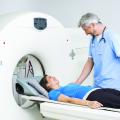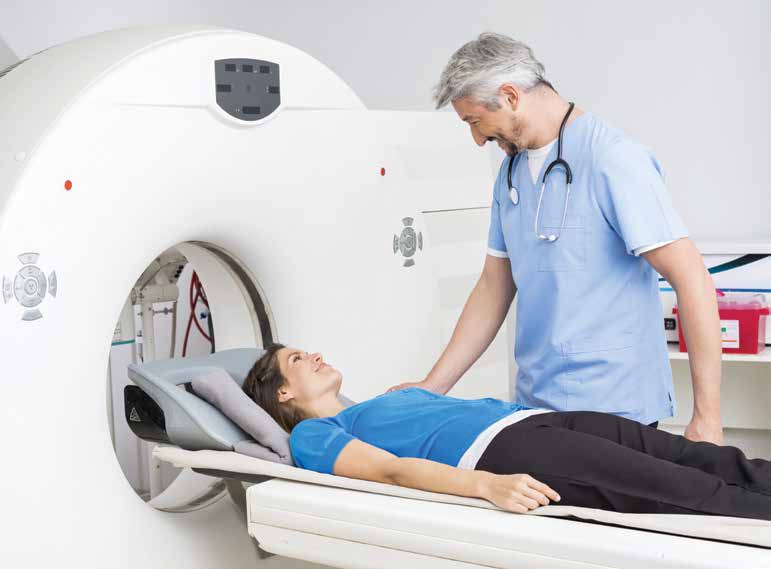Scientific
newsletters

In 75% of cases, multiple sclerosis begins with a flare-up...
There is currently no specific test to confirm a diagnosis of multiple sclerosis. Diagnosis therefore continues to be based on three major principles: a clinical analysis compatible with the diagnosis (type of symptoms, their evolution over time, the age and gender of the person, etc.), clues to dissemination over time and space (that is, symptoms involving different areas of the central nervous system and occurring at different times) and the exclusion of other diagnoses.
Clinically isolated syndrome

In 75% of cases, multiple sclerosis begins with a flare-up, that is, the appearance of neurological symptoms over a few hours to a few days which generally persist for a few days to a few weeks then gradually disappear more or less completely. Some symptoms occur more frequently than others (e.g. : loss of vision in one eye with ocular pain, double vision or weakness or pins and needles gradually extending to one or more limbs, etc.) and point to multiple sclerosis, particularly when they occur in a young patient. This is what is now known as clinically isolated syndrome or CIS.
For a long time, it wasn’t possible to make a definitive diagnosis before the second flare-up, which indicated dissemination over time and space if the symptoms suggested a lesion distinct from that of the first flare-up.
During the 1980s, Professor Poser proposed diagnosis criteria which used paraclinical tests such as visually evoked potentials to demonstrate the presence of central nervous system lesions different from those responsible for the flare-up and the presence of signs of inflammation of the cerebrospinal fluid (obtained via lumbar puncture).
Very significant progress in diagnosis
The development of magnetic resonance imaging (MRI) has led to very significant progress in the understanding and diagnosis of multiple sclerosis, notably by highlighting the preferred locations of multiple sclerosis lesions and underlining the frequency with which clinically silent lesions appear, that is, lesions which don’t have any symptoms. Examination shows the presence of old lesions (dissemination in space) and the active nature of the disease, either by revealing active lesions using contrast (Gadolinium enhancing) and/or new lesions during a follow-up MRI (dissemination in time).
At the same time, the appearance of new immunomodulator treatments enabling a decrease in the risk of new flare-ups and the rediscovery of early attack, both of the myelin sheath and of the nerve fibre itself, have highlighted the importance of early diagnosis and treatment of the disease.
Diagnosis confirmed in the first year
In 2001, a group of experts met with Professor Ian McDonald to define new diagnosis criteria taking into account the advances made in MRI.
The criteria have been refined since 2005 and, by 2010, enabled a diagnosis of multiple sclerosis in over 80% of patients in the year following the appearance of the first symptoms. Prior to this, a diagnosis of “clinically certain multiple sclerosis” based on the old criteria could only be made within a year in 30 to 40% of cases, depending on the symptoms.
However, it is important to note that neither the lesions revealed by MRI or the presence of signs of inflammation found on examination of the cerebrospinal fluid are specific to multiple sclerosis taken individually. The three main principles stated at the beginning of the article, including an assessment of the clinical probability of the diagnosis and the exclusion of other diagnoses continue to be applicable to avoid errors in diagnosis and the potential risks of unnecessary treatment.
Dr Pierrette Seeldrayers, CHU Charleroi
GBESP Chair

Newsletter 41
Stay informed
Receive all the information related to research and news from the Belgian Charcot Foundation directly in your inbox.
